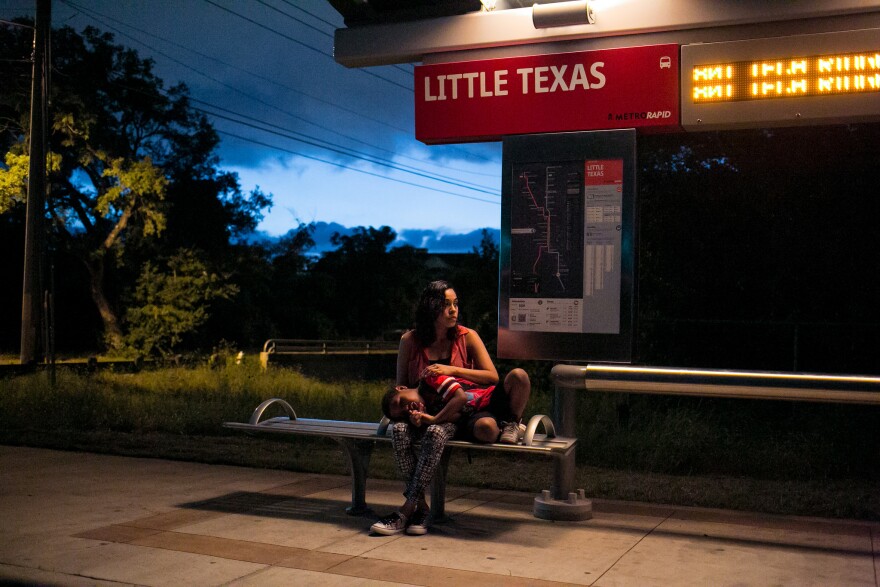Victoria Hernandez and her son Jayden wake up at 5 a.m. each day for Jayden’s pre-kindergarten class at Travis Heights Elementary School. They get ready at their apartment complex on Stassney Lane, four miles away from Travis Heights. Then, they walk to the bus stop to wait for the number one bus.
By the time they embark, it’s about 6:30 in the morning — the sun has just started to rise.

School starts around eight, but they get there early so Jayden can eat breakfast. For the past seven months, this has been their routine.
When school started last fall, they lived five minutes from school in an apartment complex called Oak Creek Village. All the apartments in the complex were subsidized housing. But then, the owners received tax credits from the federal government and the city of Austin to nearly triple the number of housing units. In exchange, the owners agreed to maintain the same number of affordable units.
Oak Creek is one of two complexes in the neighborhood that are entirely public housing. Other apartment complexes will rent to people with Section 8 vouchers. But over the years, many apartment complexes in Travis Heights have stopped renting to people with Section 8 vouchers as the neighborhood gets wealthier and more attractive to renters.

Hernandez and her son had to move out during construction.
Instead of enrolling Jayden in a new school when they had to vacate their apartment, Hernandez decided to make the daily commute.
“I don’t want to remove him out of something that he just started into this school and barely getting used to this, to go to another one and get him to used to somebody else," Hernandez says.
In Central Texas, when students move in the middle of the school year, it's often because their families are chasing cheaper rent. Last school year, nearly 20 percent of students in Austin Independent School District moved at least once, according to the non-profit E3 Alliance.

Travis Heights Elementary School opens its doors at 7:30 a.m. to serve breakfast to students who qualify for free and reduced lunch. Last year, that was 75 percent of students. On this day, Jayden eats pancakes with jelly, milk and juice.
Hernandez volunteers in Jayden’s classroom in the morning before clocking in as a cafeteria aide during lunch. It's a long day, but Hernandez says it's worth it.
"He knows education [is] important," Hernandez says. "He already says he wants to go to college. He wants to be an astronaut-slash-President...But I think it’s very important, because I really do like him to learn.”

Jayden gets out of school at two, at which point he and Hernandez will head back to the bus stop to go home. They are supposed to move into their new apartment at Oak Creek Village when it's finished being built this fall.
Below is a map of affordable housing in Travis Heights. Red markers indicate subsidized housing, while blue markers indicate properties that accept housing vouchers, according to the Housing Authority of the City of Austin. All told, 246 Travis Heights students live in subsidized housing across three properties. Twenty-nine students live in properties that accept vouchers.




